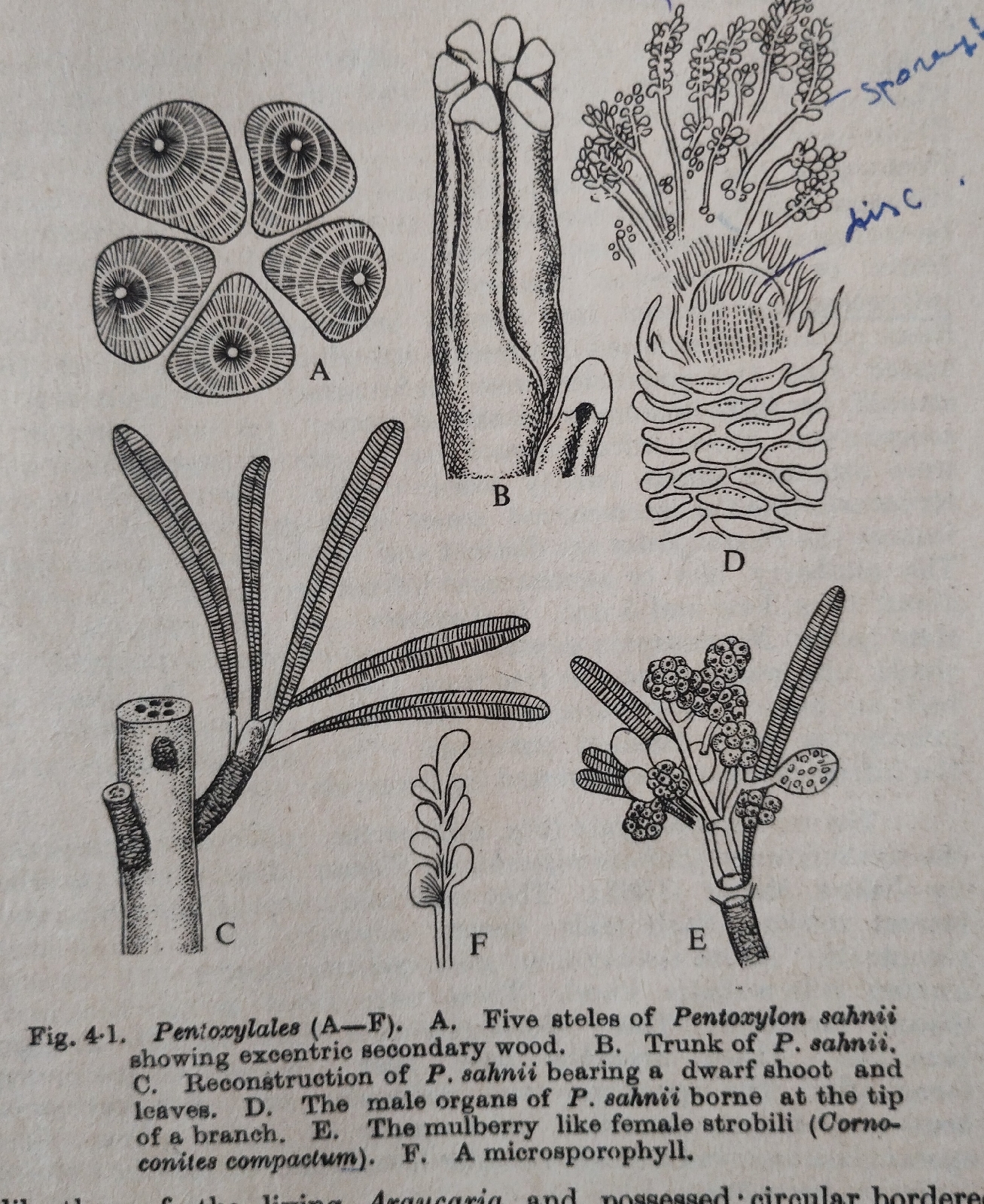Morphology of Angiosperms# Inflorescence
An inflorescence is the arrangement of flowers on an floral axis (rachis=a long simple or branched peduncle; peduncle= the main axis of an inflorescence ) of a plant .
All inflorescence are mainly grouped into three types:
(i) Racemose/ indefinite / indeterminate :the main axis or rachis continues to grow indefinitely having terminal apical bud (not floral bud ) and flowers produce acropetally (from lower to upper on the axis).
(ii) Cymose/definite/determinate : the main axis ends in a flower at early stage and rest flowers open basipetally (from upper to lower on the axis).
(iii) Mixed: an infloresence having both of racemose and cymose characters .
(A) Types of Racemose inflorescence
Main axis / peduncle is not branched .
(a) The peduncle is vertically elongated:
1. Raceme: all flowers pedicellate/stalked and length of all pedicels are equal .
e.g.
Radish (Raphanus sativus ), mustard (Brassica nigra ) of Brassicaceae.
2. Corymb: pedicels are unequal ; lower flowers with longer pedicels than the upper flowers .
e.g.
Cassia sophera of Fabaceae .
3. Spike: flowers sessile i.e. without pedicels and directly borne on main axis.
e.g.
Achyranthus aspera of Amaranthaceae.
4. Spikelet: a small spike with one or more flowers on the rachilla .
e.g.
Wheat(Triticum aestivum ) , paddy ( Oryza sativa ) of Poaceae .
5. Spadix: a modified spike where the main axis is fleshy/ succulent and the entire structure is covered by a large bract, the spathe .
e.g.
Colocasia antiquorum of Araceae .
6. Catkin /amentum: a pendulus spike with naked unisexual caducous flowers on a drooping peduncle .
e.g.
Mulberry ( Morus indica ) of Moraceae .
7. Strobile: a modified spike , flowers pistilate in the axil of persistent membranous bracts .
e.g.
Hops (Humulis lupulus) of Cannabinaceae.
(b) Peduncle is transverse :
Capitulum or Head : receptacle is more or less convex, flowers sessile , centrifugal arrangement i.e. youngest at the centre and oldest at the periphery , cluster of florets are sorrounded by series of bracts called involucre of bracts .
e.g.
Sunflower (Helianthus annuus ) of family Asteraceae .
(c)Rachis compressed :
Capitate : a cluster of sessile flowers on compressed rachis giving a globose structure .
e.g.
Acacia nilotica , Mimosa pudica of Fabaceae .
(d) Main axis is much short, appears as a point :
Umbel: flowers pedicellate, opening is centripetal , olders at periphery and younger at the centre , looks like umbrella .
e.g.
Centella asiatica of Apiaceae .
Compound Racemose type :
A compound inflorescence is developed when secondary axis repeatedly branched.
1 Compound raceme / Panicle
e.g.
Mango (Mangifera indica) of family Anacardiaceae .
2.Compound corymb:
e.g.
Spiraea corymbosa of Rosaceae.
3. Compound Umbel:
Carrot(Daucus carota ) ,
Coriander ( Coriandrum sativum ) of family Apiaceae .
4.Compound spike:
e.g.
Amaranthus viridis , A spinosus of family Amaranthaceae.
5. Compound spadix :
e.g.
Coconut (Cocos nucifera ) of Arecaceae .
6. Compound capitulum:
e.g.
Echinops echinatus of Asteraceae .
(B) Types of Cymose inflorescence
These are of three types:
1. Monochasium or Uniparous cyme:
Primary axies ends in a flower gives rise to only one lateral daughter branch ending in a flower and this process is repeated .
Uniparous cyme are of two types:
(a) Bostryx /Helicoid :flowers develop on one side only , clockwise or anti-clockwise manner ; so ,helix like structure is formed.
e.g.
Hamelia patens of Rubiaceae.
(b) Cincinus or scorpioid cyme : secondary axes developed alternately in a zigzag manner .
e.g.
Hatishur (Heliotropium indicum) of family Boraginaceae .
2.Biparous cyme or Dichasium: main axis ende in a flower; a little distance behind the apex two lateral secondary axes developed bearing flowers .
e.g.
Clerodendrum viscosum of Verbenaceae.
3. Multiparous cyme or Polychasium or Pleiochasium : primary axis ends in a flower , a little distance behind more than two secondary axes developed in a whorl .
e.g.
Calotropis procera of Asclepiadeceae.
Secial types of Cymose:
1 Verticillaster: Simple biparous scorpoid cyme formed at the axils of opposite leaves .Flowers sessile and form a false whorl at the node.
e.g. Leucas aspera of Lamiaceae
2. Cyathium : The peduncle ends into a female flower having syncarpous / G(3) / gynoecium only which is surrounded by many male flowers arranged in scorpoid cyme ;each male flower have a single stamen /A1 .The whole inflorescence is surrounded by cup-shaped glandular uniyed bracts .
e.g. Poinsettia pulcherima of Euphorbiaceae.
3 Hypanthodium : It is a hollow sphere-like receptacle/syconium with a small opening formed by the fusion of three peduncles of cymes . Male flowers, fertile female flowers & sterile female flowers are arranged all over the inner surface of the receptacle .
e.g. Ficus cunia of Moraceae (All Ficus sp)
4. Coenanthium: It is Hypanthodium like but receptacle is saucer-like.
e.g. Dorstenia cordifolia of Moraceae.
(C) Mixed inflorescence:
1. Mixed panicle: inflorescence is panicle like ,but flowers open basipetally ,just like cyme.e.g. Ligustrum vulgare of Oleaceae.
2. Mixed spadix : cymose like grouping of flowers are covered by spathe and arranged racemose like on a fleshy stalke. e.g. Banana(Musa paradisiaca ) of family Musaceae .
3. Thyrsus: inflorescence is panicle but development of flowers cymose like . Each flower has own bracts and opening is centripetal.e.g. grape vine (Vitis vinifera) of Vitaceae .
4 . Cymose umbell: inflorescence is umbel, but, position of oldest flower is at the centre. e.g. Allium sp . of Liliaceae .
5. Cymose corymb : inflorescence is corymb , but, oldest flower located centrally .e.g.Rangon( Ixora coccinia) of Rubiaceae .
6. Fascicle : It is a modified cymose corymb , but, successive axes are short and appear as corymb .e.g. Dianthus barbatus of Caryophyllaceae .




Comments
Post a Comment